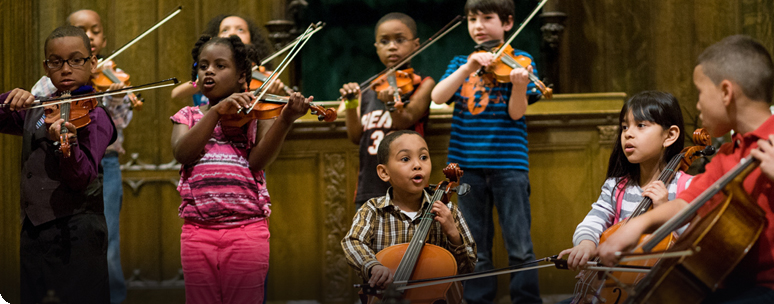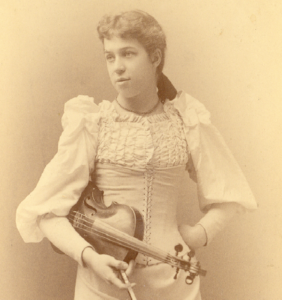No One is a StrangerEver wonder about the history of a particular musical instrument? The musicians it has served, the venues it has seen, the audiences reached? CMW recently received a donation of two instruments from a generous donor. In this account, Karen Romer gives us the story of Carrie Teale and the violins destined for our community of music-loving youth. It was the 1890’s and teenager Carrie Teale had a gift for music. She played the violin so beautifully that Leopold Auer, the great teacher of Jascha Heifetz and Nathan Milstein, heard her recital at Carnegie Hall and urged her parents to let him teach her in Germany. Carrie’s parents thought Germany was too far away for a girl of sixteen to go alone; however, her father wanted her to have the best possibilities in America, so he bought her a fine Italian violin. Carrie continued to play, but not professionally. She married young and had two daughters. Chamber music and musician friends often filled Carrie’s house. Family lore tells of her second daughter, Catherine, once asking her mother how she connected with people who were strangers only minutes before, yet were soon revealing their innermost thoughts. Carrie was stopped by the question, unaware that she was anything special. “No one is a stranger,” she said. Years later, arthritis prevented Carrie from playing even the standard folk songs and “Pop Goes the Weasel” for her grandchildren, so she entrusted her two violins to her granddaughter, Ann Chalmers Watts. “You can do whatever you want with these instruments as long as they will benefit young people,” Carrie said. Now Community MusicWorks is the fortunate recipient of those two violins. It seems the Powers That Be knew that CMW would be the perfect destination for the violins of someone who thought that “no one is a stranger”. Recently some CMW students, staff and board members came together to meet Ann and see the two violins she offered to CMW. We sat around two very well worn cases while resident musician Jesse Holstein opened and unwrapped the violins, one by one, from faded yellow silk. One, the instrument that Carrie probably played for her recital, had a golden varnish and appeared to be from the 19th century and German, modeled after an Amati. The other was dark auburn and made by Ruggieri of Cremona in 1671. (That was fourteen years before Bach and Handel were born!) Jesse passed the violins around our circle, and we admired them, asked questions and made comments. A luthier will give them careful attention before restringing and setting them up for a new life in Providence. One CMW student, Alex, observed that for hundreds of years people like herself had been excluded from the community of classical musicians and thus from the joys and satisfactions of learning about classical music through playing it; she said she is now part of that community because of CMW, and those joys are very much a part of her life, including playing Bach and “Papa Haydn.” She pointed out that she might be the first person of color to hold the Ruggieri violin. Finally, to culminate the occasion, some people played wonderfully: Alex played Bach, student Jessenia played Mazas and fellow Josie and Jesse played duos by Bach, Pleyel, and Bartok. There is a good chance you can hear these violins in 2017! –Karen Romer |


